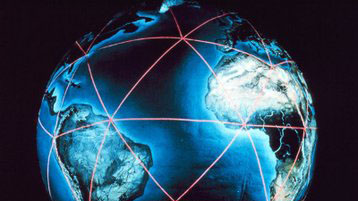Publicity: 2020-2018
Collection of News Articles or Videos Relating to E3SM

Susannah Burrows, Climate Scientist from Pacific Northwest National Laboratory participated in the Science Olympiad and continues to volunteer.
December, 2020
STEM Education at Science Olympiad:
Pacific Northwest National Laboratory’s Susannah Burrows
November 19, 2020
ASCR Discovery:
Sandia’s Mark Taylor explains how DOE’s Energy Exascale Earth System Model will harness the next level of supercomputer to explore big climate questions.

Scientific Visualization of Antarctica Ice Sheet and Southern Ocean Evolution using MPAS-Albany Land Ice and MPAS-Ocean models.
November 2020
Companion to en entry video for Supercomputing 2020:
Scientific Visualization of Antarctica Ice Sheet and Southern Ocean Evolution
High-quality visualizations of a study of Antarctic ice sheet and Southern Ocean simulations conducted with the MPAS-Albany Land Ice and MPAS-Ocean models in the context of ongoing development towards coupled Antarctic ice sheet simulations with the U.S. Department of Energy’s Energy Exascale Earth System (E3SM) model.

The August Complex, at more than 1 million acres, is the state’s first “gigafire” to occur since at least 1932. Research shows that human-caused climate change bears much of the blame.
October 21, 2020
The Washington Post:
This is What Fuels the West’s Infernos
Ruby Leung was interviewed about wildfires in this Washington Post story and cited on the sharpening of the precipitation seasonal cycle in California and implications for wildfires that can be addressed using E3SM.

At 1-kilometer resolution, a European climate model (left) is nearly indistinguishable from reality (right).
October 1, 2020
Science Magazine:
Europe is building a ‘digital twin’ of Earth to revolutionize climate forecasts
Ruby Leung was interviewed for this article which noted E3SM’s effort on exascale computing, in the context of a new European effort called “Destination Earth”.
September 25, 2020
U.S. DOE, Office of Science, Advanced Scientific Computing Advisory Committee Meeting September 24-25, 2020:
Incorporating GPUs into Earth System Science
Mark Taylor gave a talk on E3SM at the DOE ASCR Advanced Scientific Computing Advisory Committee.
September 24, 2020
insideHPC:
Video: Exascale for Earth System Modeling of Storms, Droughts, Sea Level Rise
Mark Taylor was interviewed by insideHPC and talked about the use of exascale-class supercomputers – to be delivered to three U.S. Department of Energy national labs in 2021 – for large-scale and water resource forecasting.

Rows of cabinets hold incredible processing power for one of the world’s best supercomputers, Summit, at Oak Ridge National Laboratory in TN. Exascale computing will surpass these existing computers by leaps and bounds.
September 15, 2020
PNAS:
Core Concept: Nascent exascale supercomputers offer promise, present challenges
Ruby Leung and E3SM mentioned in “Core Concept: Nascent exascale supercomputers offer promise, present challenges” in PNAS.

A graphic showing ocean circulation developed from MPAS (Model for Prediction Across Scales) components for oceans, sea ice, and land ice. (Graphic courtesy E3SM.org.)
August 19, 2020
Georgia Institute of Technology:
Making Earth System Models that Match the Speed of Climate Change
Annalisa Bracco and Taka Ito land a Department of Energy grant to improve computer models for analyzing Earth’s carbon cycles across oceans, land, and the atmosphere.

An international team of scientists, including Berkeley Lab’s William Riley and Qing Zhu, published an update on the global methane budget as part of the Global Carbon Project.
August 13, 2020
Berkeley Lab News Center:
Global Methane Emissions Soaring, But How Much Was Due to Wetlands?
A Q&A with Berkeley Lab scientist William Riley on the challenges in estimating methane emissions from wetlands and how nuanced computer models may help.
July 27, 2020
DCD, Data Center Dynamics:
DOE Announces $7M for Energy Exascale Earth System Model
The Department of Energy will fund nine studies designed to help improve the Energy Exascale Earth System Model program. E3SM plans to create a comprehensive model of the Earth system. The projects, lasting three years, will together cost $7m.

In the E3SM-MMF project’s multiscale modeling framework, a cloud-resolving model is embedded within a global model of Earth’s atmosphere. The cloud-resolving model improves the ability to simulate the many processes responsible for cloud formation. Credit: the E3SM-MMF project.
June 25, 2020
ECP, Exascale Computing Project:
E3SM-MMF: Forecasting Water Resources and Severe Weather with Greater Confidence
Mark Taylor was interviewed on the ECP website.

This storm over the Russian River in California was driven by an atmospheric river. Every time the Russian River flooded between 2004 and 2014, it was because of one of these “rivers in the sky.”
March 10, 2020
DOE Office of Science:
Flooding the Sky: Navigating the Science of Atmospheric Rivers
Ruby Leung was interviewed for this DOE Office of Science article on how researchers are collaborating to measure atmospheric rivers and figure out how they can be factored into climate models.

Current-climate bias metrics in the high-resolution model (HR) are generally improved relative to the low/standard-resolution E3SMv1 model (LR), which is itself generally superior to most CMIP5 models (boxes and whiskers in the image above which shows the root-mean-square error (RMSE) where lower values are better).
March 3, 2020
ScienceDaily:
New Version of Earth Model Captures Climate Dynamics
Rob Jacob interviewed: A new high-resolution Earth systems model has been designed to predict climate trends into the next century. The model will provide the scientific basis by which to mitigate the effects of extreme climate on energy and other essential services.
February 14, 2020
Direct Current Podcast – LIVE AT AAAS:
The Future of Water & Wildfire
Ruby Leung was interviewed in a DOE podcast on future water and wildfire challenges at the AAAS annual meeting, highlighting relevant E3SM capabilities that can be brought to bear.
E3SM Video
E3SM in News
Release notes:
- LLNL: https://www.llnl.gov/news/new-exascale-system-earth-simulation
- PNNL: https://www.pnnl.gov/news/release.aspx?id=4503
- LANL: http://www.lanl.gov/discover/news-release-archive/2018/April/0423-earth-modeling-system.php
- ORNL: https://www.ornl.gov/news/new-exascale-earth-modeling-system-energy
- LBNL: https://eesa.lbl.gov/new-high-resolution-exascale-earth-modeling-system-for-energy/
- SNL: https://share-ng.sandia.gov/news/resources/news_releases/exascale_models/#.WudKKNPwZSM
In the news:
- Forbes: 2018-04-23 Energy department predicts how extreme climate and weather will impact US energy systems
- Top 500: DOE unveils exascale earth modeling system
- Observer: Energy Exascale Earth System Model performs high resolutions environment simulations
- https://insights.globalspec.com/article/8627/watch-exascale-computing-system-for-earth-simulation-is-released
- https://infoglitz.com/doe-introduces-exascale-earth-modeling-system/
- https://gcn.com/articles/2018/04/26/e3sm-earth-model.aspx
- http://allofit.net/doe-unveils-exascale-earth-modeling-system/













